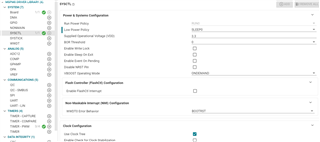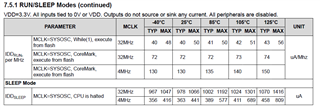Hi Team,
We would like to have a research on MSPM0L130x-Q1 for our backup battery platform.
There is one requirement relate to the wake up from sleep mode, please kindly comment if M0 MCU can achieve this fucntion.
The input wakeup signal can be these four kinds of status when MCU is in sleep mode:
- Status 1: A duty cycle=50% square wave, cycle=1±0.05s, the MCU should keep sleep at this condition.
- Status 2: A duty cycle=50% square wave, cycle=60±1ms, the MCU should keep sleep at this condition.
- Status 3: A duty cycle=50% square wave, cycle=20±1ms, the MCU should be wake up at this condition.
- Status 4: A duty cycle=50% square wave, cycle=10±1ms, the MCU should be wake up at this condition.
Can M0L130x-Q1 family achieve the above wake up function based on the cycle/frequency of the square wave? How does it achieve?
And what is the quiescent current when using this kind of wake up logic?
Many thanks!
Best,
Frank




